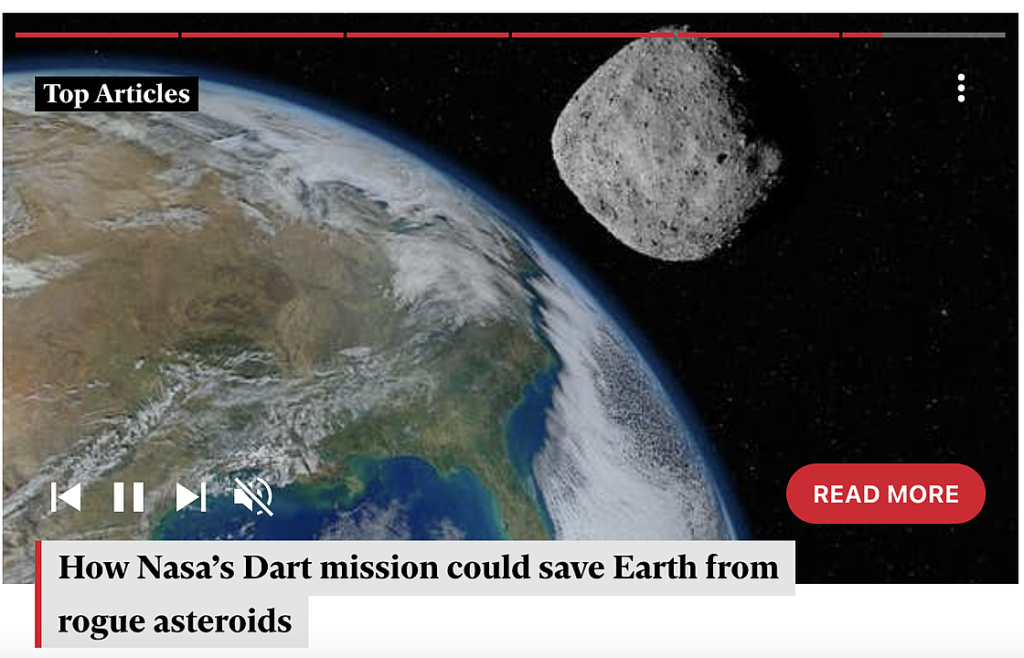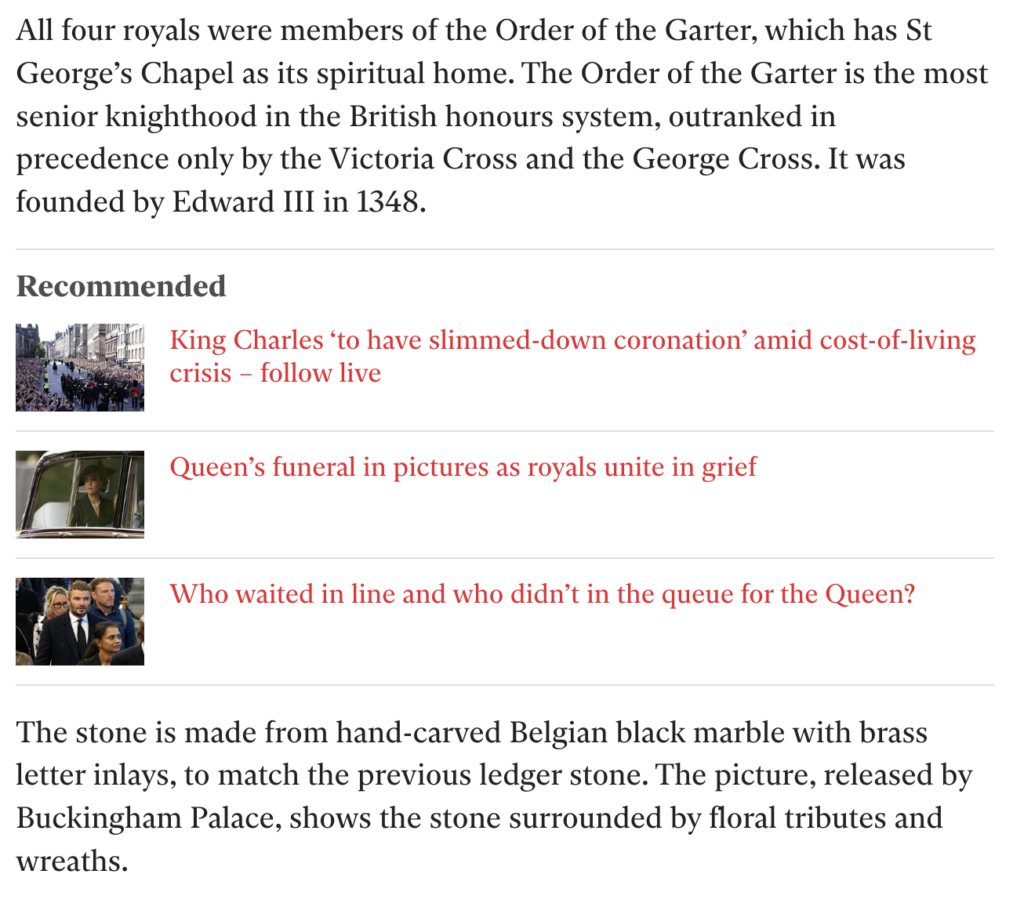Recirculation: a real-time metric that compares the number of visitors to a page to the number of users who move from that content to another page.
Why is recirculation a valuable KPI?
Recirculation is more valuable to your business than acquiring new visitors. Not only is acquisition becoming increasingly difficult and costly, viewing more pages on each visit means higher engagement, loyalty and propensity to subscribe, all of which directly correlate to revenue.
According to Chartbeat, there are 3 things that make up the anatomy of a recirculation strategy:
- Show off the depth and quality of your content, so every reader knows that you have more than just the great article they clicked on
- Given the amount of readers that come from external platforms like Google and Facebook, almost all of which are landing on an article rather than your homepage, a clear recirculation strategy can push those readers further down the loyalty journey
- Most publishers rely on programmatic widgets to surface related stories, but related links — chosen by editors and placed at strategic points in the story — are an effective way to encourage deeper visits. Especially on mobile, where more widgets appear at the bottom of the page (where no readers will see them)
The Independent, mastering the recirculation game
Just a single article contains 5 recirculation techniques for you to steal:
1. Backlinks on keywords
Learn to link: add backlinks on keywords, leading to other articles or content topics:

⭐ Best practice: differentiate these linked words and phrases from other text by placing them in another color or underlining them. This practice should be consistent across your site so users recognize where to click.
But don’t forget to check your average scroll depth for optimal click potential:
Chartbeat research has found that the majority of clicks happen just above the digital fold, at page depths of 400 to 600 pixels (as indicated below), so it’s important to optimize your articles for those related links.

Discover Chartbeat’s other research on optimal article length
2. An interactive, Instagram story style slide-show shares 6 top articles

💡 Images with links generate 63% more clicks than those of text-only (data from Lenfest Institute) and, considering the amount of time your audience spends on social media, taking inspiration from there to increase engagement can only prove beneficial.
The key to good recirculation is through interactivity – engaging visitors in a positive way to make suggested articles feel personal and non-intrusive, being careful to cater to the reader’s interests as well as your own.
3. Personalized recommendations based on the content topic

This is more valuable than recommending content at the end of the article as Average Scroll Depth metrics will likely reveal that a large percentage of your audience don’t read until the end.
4. ‘Most popular’ content recommendations at the side of the page

💡 Generic wording (e.g. “Related Stories”) generates higher CTRs than more complex wording (e.g. “What Else People Can Read on This Topic”) according to data from the Center for Media Engagement. Note how all of these examples from The Independent involve phrases with a maximum of 2 words.
What’s more, inviting readers to discover your most popular articles allows them to feel part of a shared conversation, being ‘in the know’ by reading the articles that others are reading. This was Netflix’s thought process behind the “Top 10 in [insert your country]” feature.
5. At the end, a small “More about” text offering links to key topics featured in the article

A final chance to lead your user on to another article, however don’t bet on all readers reaching this point.
Don’t recirculate without thinking
Poor recirculation can have more of a negative than positive impact on engagement, so don’t go overboard and make sure to consider your recirculation tactics carefully.
For The Independent, these 5 strategies were all employed in a single article. Of course, recirculation is valuable, but so is a pleasant, engaging user experience. If there are too many distractions or frustrating features that prevent the reader from being able to consume the article ‘in peace’, then recirculation efforts will be wasted and you may even push your reader away. This is especially true for websites that depend on advertising (an additional distraction for readers), or for users visiting on mobile devices where the screen is smaller.
You should also aim to make the most out of your content resources for recirculation:
- Surface popular content that are a dead end for readers – these represent your best opportunities to drive recirculation
- Segment traffic and tailor your recirculation strategy based on source, user interests or device used
- Leverage the Heads Up Display. This helps you know if the reason why readers are leaving the page is because of another story on your website
- Use historical engagement data to find good potential recircultation links
This article was originally published by The Audiencers. The Audiencers is a B2B publication by Poool, The Membership and Subscription Suite, a simple, all-in-one platform for digital content producers to convert, manage and retain their members and subscribers. Find out more on poool.tech or book a free demo with their team.

